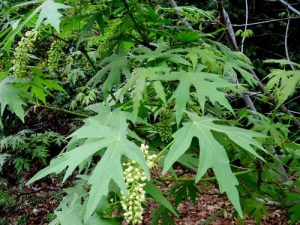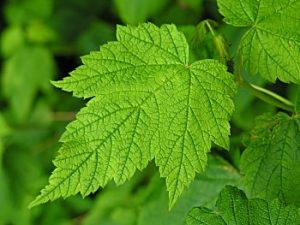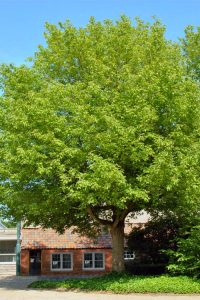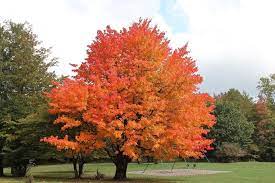The Best Maple Trees to Plant in Southern California
Though different in many ways, all maples share certain characteristics. They are all deciduous, meaning they lose their leaves each fall and have opposite leaf arrangements. Additionally, most maples produce small, winged seeds that spin as they fall to the ground. These seeds are often called “helicopters” or “whirlybirds.”
Maples are indigenous to every continent except Antarctica and can be found in a wide range of habitats, from tropical rainforests to high-altitude mountains. There are over 128 species of maple trees, many of which are popular as ornamental trees in home gardens.
Southern California is well known for its mild weather and sunny skies, making it a great place to grow a variety of plants and trees. While maple trees are a popular choice for many homeowners and gardeners, not all maple trees are well suited for the climate in Southern California. Here are some of the best maple trees to grow in Southern California:
Bigleaf Maple (Acer Macrophyllum)

Bigleaf maple is a deciduous tree indigenous to North America’s west coast. It is the largest species of maple and can grow up to 100 feet tall. The leaves are large, up to 12 inches wide and 10 inches long, and they have a deeply lobed shape. They are green in the spring and summer and turn yellow, orange, or red in the fall. The flowers are small, white, and clustered together in groups of three. Bigleaf maple yields a two-seeded samara that ripens in the fall. The bark is brown or black and is smooth when the tree is young but becomes deeply furrowed as the tree matures. Bigleaf maple is a popular tree for landscaping because of its size and foliage, but it is also an important food source for wildlife. The seeds are eaten by birds, squirrels, and mice, while deer and elk browse the leaves. It is also adaptable to various soil types and moisture levels and prefers full sun to partial shade. It is also resistant to drought, frost, and heat.
Vine Maple (Acer Circinatum)

The vine maple (Acer circinatum) is a small tree or large shrub native to the Pacific Northwest. It gets its name from its vining habit and its maple-like leaves. The vine maple typically grows to 15-20 feet tall and wide but can reach up to 30 feet tall in ideal conditions. The leaves are 3-5 inches wide and have 5-7 lobes. They are green in the summer and turn yellow, orange, or red in the fall. The flowers are small and borne in clusters of 5-7. They are white or pale pink and appear in early spring. The fruit is a winged samara 2-3 inches long and matures in late summer. Vine maples grow best in partial shade and moist, well-drained soils. They are relatively slow growing but can live for 100 years or more. Vine Maples prefer moist, well-drained soils and partial shade, but they can also grow in full sun. They are relatively drought tolerant once they are established, but they will need regular watering during the first year or two after planting. Vine Maples can be propagated from seed or cuttings. Seedlings should be transplanted when they are two or three years old, while Cuttings should be taken from young, healthy branches in late spring or early summer. Vine maples are often used as ornamental plants in gardens and landscapes. They are also popular with birds and other wildlife.
Mountain Maple (Acer Glabrum)

The mountain maple is a deciduous tree that is native to the mountains of western North America. It grows to a height of 20-30 feet and has a spread of 15-20 feet. The leaves are dark green and glossy, with three to five lobes. The flowers are small and reddish, blooming in early summer. The fruit is a two-seeded samara, which ripens in late summer and early autumn. Mountain maples can be propagated by seed or cuttings. They are relatively slow-growing trees but can live for up to 100 years. In southern California, mountain maples can be grown in USDA plant hardiness zones 5-8. They prefer full sun to partial shade and well-drained soil. When planting, it is important to choose a site that is protected from strong winds. It is drought-tolerant once established but does not tolerate salt spray or salty soils. Mountain Maple can be propagated from seed or cuttings. If you are growing it from seed, start the seeds indoors in late winter or early spring. Transplant the seedlings outdoors after the last frost date. If you are taking cuttings, do so in late summer or early autumn. Root the cuttings in sand, perlite, or vermiculite. Once they have rooted, transplant them into pots filled with potting mix. Water regularly and fertilize monthly during the growing season.
Box Elder Maple (Acer Negundo)

This fast-growing tree can reach a height of up to 30 feet. It has a spreading habit, with branches that grow horizontally from the trunk. The leaves are opposite each other on the stem and have a unique three-lobed shape with ash-like foliage. The flowers are small and inconspicuous, but they give way to clusters of winged fruits that are attractive to birds. The tree’s bark is smooth and grey, with a distinctive diamond-shaped pattern. Its fruit is a two-winged seed that is brown and papery. The Box Elder Maple is tolerant of a variety of soil types and can even grow in poor soils. It is also resistant to drought and can tolerate full sun or partial shade. Because of its ability to adapt to different conditions, the Box Elder Maple is a popular landscape choice. It can be propagated from seed or cuttings. Box Elder Maples are fast-growing trees, so they will need to be pruned regularly to control their size and shape.
Japanese Maple (Acer Palmatum)

The Japanese Maple is a popular ornamental tree that is native to Japan, Korea, and China. It is often grown as an ornamental tree and prized for its delicate leaves and stunning fall colors. The Japanese Maple typically has five-lobed leaves 2-6 inches wide. The leaves are borne on slender branches, and they turn red, orange, or yellow in the fall. The Japanese Maple also produces small, greenish-yellow flowers in the spring. These flowers give way to shiny red or purple fruits that contain seeds that birds love to eat. Japanese Maples can grow to be 20-35 feet tall and live for 100 years or more. With their graceful shape and beautiful foliage, Japanese Maples are truly a sight to behold. The tree is also popular for its relatively small size, which makes it ideal for use in smaller gardens. They are also relatively easy to care for and can tolerate both partial shade and full sun. With their stunning foliage and compact size, Japanese Maples are an excellent addition to any garden.
Sugar Maple (Acer saccharum)

The sugar maple is a large deciduous tree that is native to North America. It can grow to be up to 40 meters tall and has a broad, rounded crown. The leaves are dark green and have five lobes. In the fall, the leaves turn a beautiful shade of orange or red. The bark is smooth and greyish-brown but becomes dark and fissured with age. The flowers are small and greenish-yellow, borne in clusters of 5-12 blooms. The sugar maple is an important source of syrup and sugar. The sap runs highest in the spring when the weather is warm during the day and cold at night. This causes the sap to flow more slowly and allows it to become more concentrated. The sugar maple is also used for lumber, veneer, and wood pulp. It is considered one of the best hardwoods for furniture making because it is strong yet easy to work with.
How to grow maple trees
Maples are relatively easy to grow, but there are a few things you should know before you get started. First, maples prefer full sun or partial shade. They also need well-drained soil that is rich in organic matter. Maples can be grown from seed, but it is easier to propagate them from cuttings or grafted scions. Seedlings should be transplanted when they are two years old. Cuttings can be taken in late spring or early summer. Grafting is best done in late winter, just before the tree starts to grow.
While they are known to be relatively easy to grow, there are still some important considerations to take into account when planting maple trees. One of the most important things to consider is the type of soil in which the tree will be planted. Maple trees prefer well-drained, moist soils with a slightly acidic pH level. The ideal location for planting would be in an area that receives full sun. Once you have selected the perfect spot, it is time to prepare the soil. Be sure to loosen the soil to a depth of at least 18 inches and remove any rocks or other debris that may be present. After digging the hole, it is time to plant the tree. Be sure to backfill the hole with loose soil and water thoroughly.
How to care for maple trees
Like any other tree, Maples will need care and attention while growing in order to achieve the best results. Here are some tips for keeping your maple tree healthy:
- Watering: Maple trees need deep, regular watering to ensure that their roots have access to moisture. During hot, dry periods, you may need to water your tree twice a week or more.
- Fertilizing: Maple trees also need to be fertilized twice a year, in the spring and fall. A slow-release fertilizer is best, as it will provide a steady supply of nutrients throughout the season. You can also top-dress the soil around your tree with compost or Mulch to give it an extra boost of nutrients.
- Pruning: Unlike most other trees, maples should be pruned in the late winter or early spring. This helps to prevent damage to the delicate bark and ensures that the tree will have a strong structure for the growing season
Diseases and pests that can affect maple trees
While maple trees are quite resilient, they can sometimes be affected by diseases and pests. One of the most common problems is anthracnose, a fungal disease that causes black or brown spots to form on the leaves. Maple trees can also be affected by verticillium wilt, a fungal disease that inhibits the tree’s ability to transport water. Maple trees are also susceptible to several pests, including aphids, scales, and borers. Aphids feed on the sap of the tree, which can lead to stunted growth and distorted leaves. Scales suck the sap from the leaves and twigs, weakening the tree and making it more susceptible to disease. Borers tunnel into the tree’s trunk, causing extensive damage that can eventually kill the tree. Fortunately, these problems can usually be treated with fungicides and insecticides. Regularly inspecting your maple tree for signs of disease or pests can help keep it healthy for generations.
Conclusion
Maple trees are a great addition to any landscape. These trees can tolerate hot weather and drought conditions, making them a good choice for homeowners in Southern California. With their beautiful foliage and stately form, they are sure to add curb appeal to your home. But while they may be lovely to look at, maple trees also require some care and attention. For one ensure that the tree has been planted on the right soil and under the right conditions. Be sure to regularly water and fertilize your tree and prune it in the late winter or early spring. It is also important to monitor your tree/s to ensure that pests or diseases infest them. Remember that different types of maples may require different care so it is important to research your maple species before planting one.


